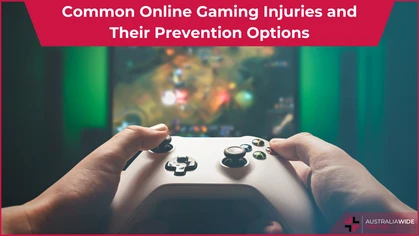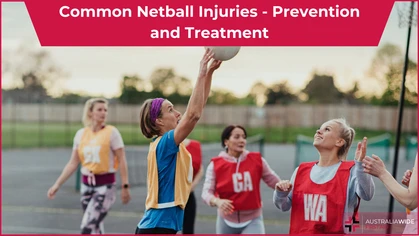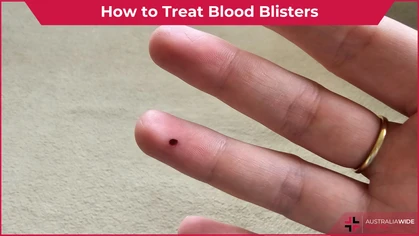Repetitive Strain Injury: Understanding the Symptoms and Causes

Injury
 Many people who work in jobs that require repetitive movements may develop a common condition called Repetitive Strain Injury (RSI).
RSI is caused by the overuse of certain muscles, tendons, and nervous systems and can affect various body parts, such as the hands, wrists, arms, shoulders, neck, and back. This condition can lead to chronic pain, discomfort, and decreased quality of life.
Many people who work in jobs that require repetitive movements may develop a common condition called Repetitive Strain Injury (RSI).
RSI is caused by the overuse of certain muscles, tendons, and nervous systems and can affect various body parts, such as the hands, wrists, arms, shoulders, neck, and back. This condition can lead to chronic pain, discomfort, and decreased quality of life.
Symptoms of RSI
The symptoms of RSI can vary depending on the affected area. Common symptoms include aches:- Stiffness.
- Tingling.
- Numbness.
- Weakness.
- Cramp.
- Reduced movement in your joints.
Causes of RSI
RSI is often caused by repetitive movements or overuse of certain muscles and tendons. It can also be caused by poor posture, lack of rest, or an awkward working position. Some of the common types of RSI include carpal tunnel syndrome, tendonitis, and bursitis. Other factors contributing to RSI include stress, anxiety, and poor overall health. Repetitive Strain Injury (RSI) can be caused.- Poor posture, lack of rest, stress, and overall health.
- Prolonged sitting or standing in an awkward position or working without breaks can cause muscle and joint strain, leading to RSI.
- Stress can increase the risk of RSI by causing muscle tension and poor ergonomics.
- Underlying health conditions can also make a person more prone to RSI.
Carpal Tunnel Syndrome
Carpal tunnel syndrome is a type of RSI caused by compression of the median nerve in the wrist due to repetitive movements like typing or using a mouse. This compression leads to swelling in the carpal tunnel. Other conditions, such as tendonitis and bursitis, can also result from overuse of specific muscle groups.Tendonitis Syndrome
Tendonitis results from repetitive motions or overuse, causing swelling, weakness, and stiffness in areas like the wrist, elbow, shoulder, or Achilles tendon. RICE, physical therapy, or surgery can help alleviate symptoms.Bursitis Syndrome
Bursitis is swelling and pain near joints caused by repeating movements, injury, or infection. It's common in knee, hip, elbow, and shoulder. Rest, RICE, physical therapy, medication, or draining fluid can be used for treatment.Diffrenes between tendonitis and bursitis
While both tendonitis and bursitis are types of RSI, they affect different areas of the body and have distinct causes and symptoms: Tendonitis:- Muscles attach to bones through tendons, which are fibrous connective tissues. Tendonitis is inflammation of these tissues.
- It is typically caused by repetitive motions or overuse of a specific muscle-tendon unit.
- Common symptoms of tendonitis include pain, stiffness, swelling around the affected area, decreased range of motion, and weakness.
- Inflammation of the bursa, a tiny sac of fluid that acts as a cushion between bones and soft tissues like muscles and tendons, causes bursitis.
- It can be caused by repetitive motions, prolonged pressure, or a sudden injury.
- Common symptoms of bursitis include pain, tenderness, swelling around the affected area, difficulty moving the joint, and a feeling of warmth or redness.
Soft Tissue Injuries
RSI is a type of soft tissue injury. Soft tissue injuries affect the muscles, tendons, and ligaments. These injuries can cause pain, swelling, and limited range of motion.Treatment Options for RSI
If you have symptoms of RSI, it's crucial to promptly seek medical attention. The initial step to treat RSI is to give the affected area rest, which may involve taking a break from activities that cause discomfort or pain. You can also apply ice or heat to the affected area to alleviate pain and swelling. Rest and Recovery:- Rest the affected area to allow it to heal
- Take breaks from activities that cause discomfort or pain
- Apply ice or heat to alleviate pain and swelling
- Stretching and strengthening exercises can improve flexibility and reduce pain
- Physical therapy can help to restore mobility and range of motion
- Strengthening the affected muscles and tendons can prevent future injury
- Stress can contribute to RSI, so stress relief management techniques are important
- Deep breathing exercises can help to cope with stress and reduce the risk of RSI
- Mindfulness practices such as yoga and meditation can also help to reduce stress
- Proper ergonomics can reduce strain on the body
- Adjusting the workspace to fit the individual's needs can prevent RSI
- Ergonomic equipment, such as an ergonomic keyboard or chair, can help to reduce strain on the body
- Alternative treatments such as acupuncture or massage therapy may be beneficial
- Consult with a healthcare professional before trying any alternative treatments
Preventing RSI
Prevention is key to managing RSI:- Taking frequent breaks during repetitive activities
- Using proper posture and ergonomics when working
- Maintaining a healthy lifestyle, including regular physical activity and a balanced diet
- Managing stress through stress-relieving activities like deep breaths and meditation
Physical Therapy
RSI can be effectively treated with physical therapy, which includes exercises that stretch and strengthen muscles, improving flexibility and reducing pain. Additionally, a physical therapist can suggest adjustments to your work environment that lower the chances of future injury.Stress Management Techniques
Repetitive stress injuries are often caused by feeling stressed. To lower the risk of RSI, learning stress management techniques such as deep breathing exercises, meditation, and physical activity is helpful. Dealing with stress is key in managing RSI. Identify stress-relieving techniques that work for you to prevent injury. Try deep breathing, meditation, or exercise. Take breaks during repetitive tasks to prevent RSI.Managing Chronic Pain
Chronic pain can be a major symptom of RSI. Managing chronic pain is crucial to improving quality of life. Several treatment options for chronic pain include medication, physical therapy, and stress management techniques. A healthcare professional can recommend the best treatment option for your individual needs.Repetitive Strain Injury Medication
RSI can be treated with various options, such as medication. Over-the-counter pain relievers like ibuprofen can assist in managing chronic pain. Seeking advice from a healthcare professional before taking any medication is imperative. Some medications may have side effects that can worsen the condition. Surgery may sometimes be required to treat severe pain and swelling.First Aid for Spinal Injury
Sometimes, repetitive strain injury (RSI) can harm the spine. Suppose you suspect you or someone you know has experienced a spinal injury. In that case, it is crucial to seek medical assistance immediately. While waiting for medical help, keeping the affected person immobile and avoiding movement is essential to minimize the risk of additional injury.Conclusion
RSI is a common condition caused by repetitive movements. Seek medical attention if you experience symptoms. Treatment options include medication, rest, physical therapy, and stress management. Prevent RSI by reducing repetitive movements.
Originally published at
https://www.australiawidefirstaid.com.au/resources/understanding-repetitive-strain-injury
as part of the Australia Wide First Aid Articles Library









